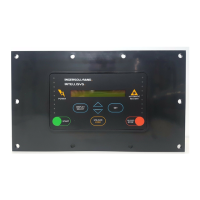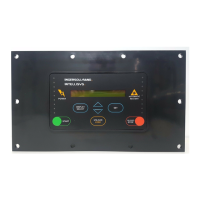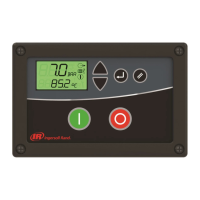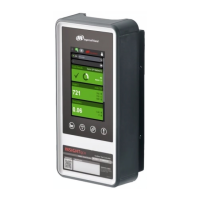03539319_ed3 15
Maintenance, Disassembly / Assembly Instructions for Manual Valve
Always wear eye protection when operating or performing any maintenance on this starter. Always turn o the air and electrical
supply and disconnect the air and electrical supply before installing or removing any component on this valve, before making any
adjustments on this valve or before performing any maintenance on this valve.
Disassembly
General Information
Do not disassemble the valve any further than necessary to
replace worn parts.
When grasping a part in a vise, always use leather-covered or
copper-covered vise jaws to protect the surface of the part and
help prevent distortion. This is particularly true of threaded
members.
Do not remove any part which is a press t in or on a subassembly
unless the removal of that part is necessary for replacement or
repairs.
Always have a complete set of seals and O-rings on hand before
starting any overhaul of the valve. Never reuse old seals or
gaskets.
1.
2.
3.
4.
Disassembly of the Valve
Unscrew the Check Valve (7) from the Valve Housing (1). Remove
Plugs (8) from the Valve Assembly.
Remove the six Cover Screws (9) from the Cover and Valve
Housing.
Remove the Diaphragm (4) from the Valve Housing and the O-ring
(2) from the pocket in the Valve Housing.
Unscrew the Cap (5) from the Valve Housing. Remove the O-ring
(4) from the Cap. The Spring (6) and Plunger should come out
with the Cap. If not, remove them from the Valve Housing.
Remove the Grommet (4) from the Valve Housing.
1.
2.
3.
4.
5.
Assembly
General Information
Whenever grasping a valve or part in a vise, always use leather-
covered or copper-covered vise jaws. Take extra care with
threaded parts or housings.
Apply a lm of o-ring lubricant to all O-rings before nal assembly.
Assembly of the Valve
Insert the rounded end of the Grommet (4) in the top of the
Valve Housing (1) through the valve body hole. The top can be
identied by the concentric raised rings.
Lubricate the O-rings on the Valve Stem (4) and Plunger (4) with
O-ring Lubricant. Push this assembly through the Grommet from
the bottom of the Valve so that the Plunger seals on the valve
seat.
Turn the Valve Housing over and place the Spring (6) on the
Plunger with the smaller diameter of the Spring leading.
1.
2.
1.
2.
3.
Place the large O-ring (4) on the Cap (5). Guide the Spring and
Plunger into the Cap while screwing the Cap into the Valve
Housing. Tighten the Cap until it seats snugly against the Valve
Housing.
Place the O-ring (2) into the pocket of the Valve Housing.
Place the Diaphragm (4) on the Valve Housing, making sure that
the punched hole of the Diaphragm is aligned over the O-ring
and that the plastic disk of the Diaphragm is up.
Set the Housing Cover on the Valve Body so that the O-ring
shoulder ts into the diaphragm hole.
Attach the six Cover Screws (9) through the Cover and Diaphragm
and into the Housing. Alternately tighten the Screws to
45-55 in - lb (5.1 - 6.2 Nm) torque. Screw the Check Valve (7) into
the Valve Body to 40-50 ft/lbs (54-67Nm).
4.
5.
6.
7.
8.
Test and Inspection Procedure
Solenoids: Using a solenoid tester, apply 9 VDC minimum to 24 VDC maximum to Solenoid. The Solenoid should activate the Armature with a
minimum 9 volt charge and a “clicking” sound indicates that the Solenoid is functioning properly. Follow this procedure for both the Exhaust
Solenoid and the Pressure Solenoid.

